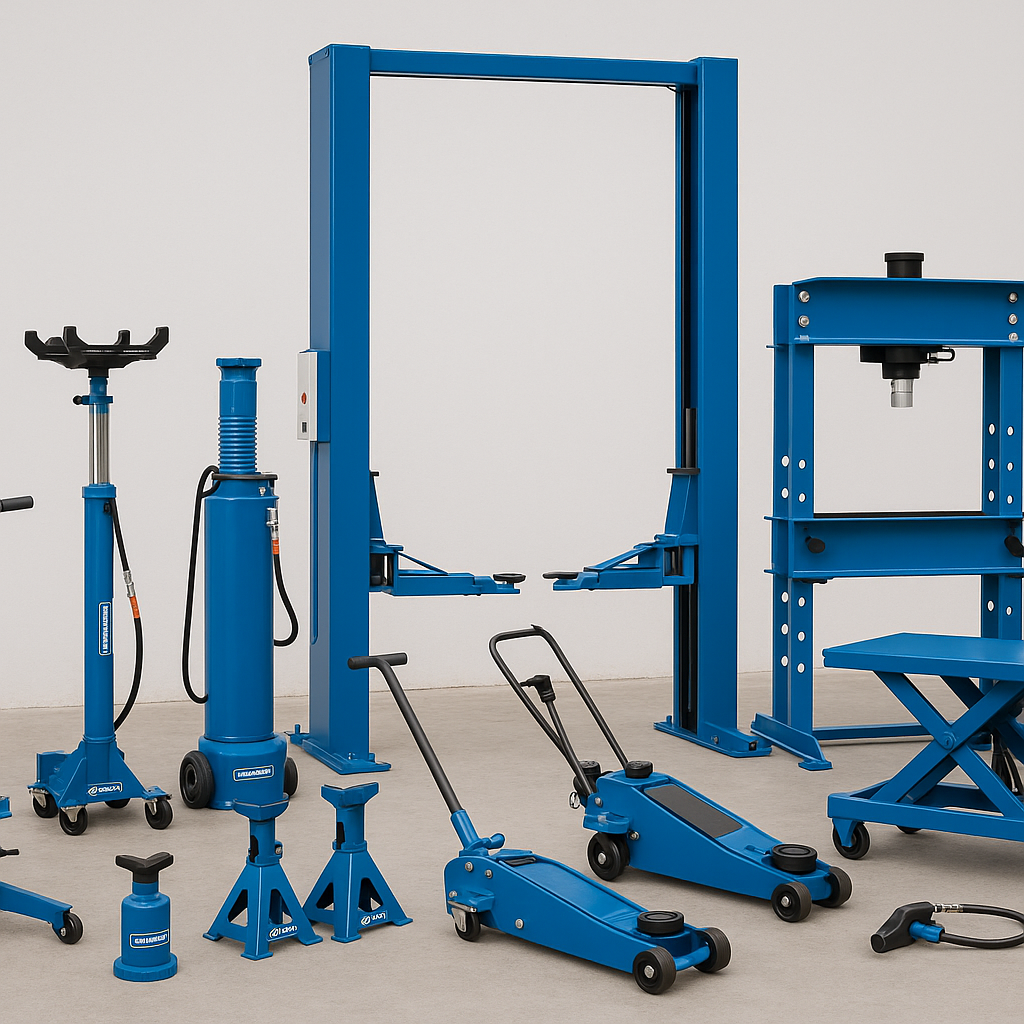TECHNICAL DOCUMENTATION
Lifting equipment training kit AULIF1-1
GENERAL INFORMATION
The Lifting Equipment Training Kit is designed for technical training centers. It is intended to teach students practical skills in operating various types of heavy-duty lifting equipment used in automotive repair workshops. The kit consists of equipment identical to that used in real-world conditions, enabling simulation of lifting, lowering, securing, and various lifting scenarios.
Learning objectives
Introduce students to various types of lifting equipment and their applications.
Develop practical skills for the safe use of jacks, lifts, and hydraulic devices.
Strengthen the ability to apply appropriate lifting solutions based on the type of vehicle and the specifics of the task.
Practice repair and maintenance work using modern workshop equipment.
The equipment set includes
The transmission jack is used to lift and safely remove gearboxes during vehicle transmission repairs.
The pneumo-hydraulic jack is suitable for lifting truck axles and operates using compressed air and hydraulic pressure.
The 10-ton stands are stabilizing devices used to support vehicles when lifted, typically in combination with jacks.
The pit lift is installed in the workshop floor and allows the entire vehicle to be raised above a service pit.
The pneumo-hydraulic press is used for various pressing operations, such as pressing in bearings or straightening axles.
The puller is a hydraulic device used for removing bearings, hubs, and mechanical components.
The platform lift for electric vehicle batteries is used for removing and installing battery packs.
The two-post electro-hydraulic lift is a universal lift designed for raising the vehicle body.
The mobile scissor lift is a compact device intended for lifting to lower heights of up to 1 meter.
The axle lift is a pneumo-hydraulic device designed to lift individual vehicle axles.
Usage requirements
Working air pressure: 6–10 bar (for pneumo-hydraulic components).
Power supply: 220–400 V, depending on the type of lift.
Solid floor structure for securing lifts (when required).
Minimum workshop area of 25–30 m² for practical training activities.
